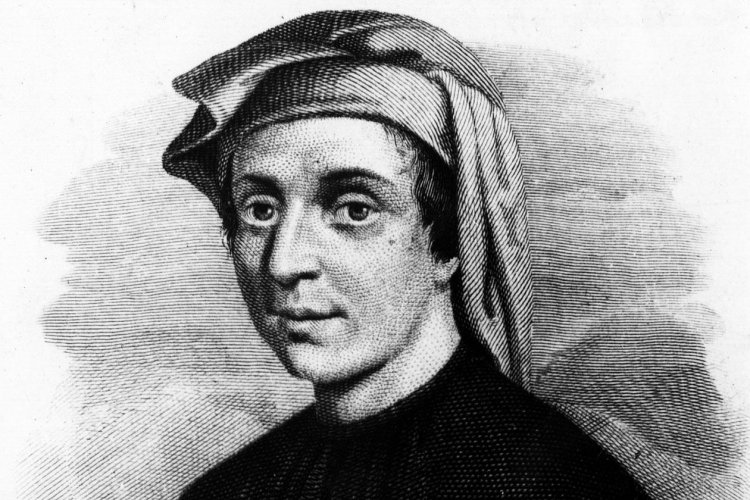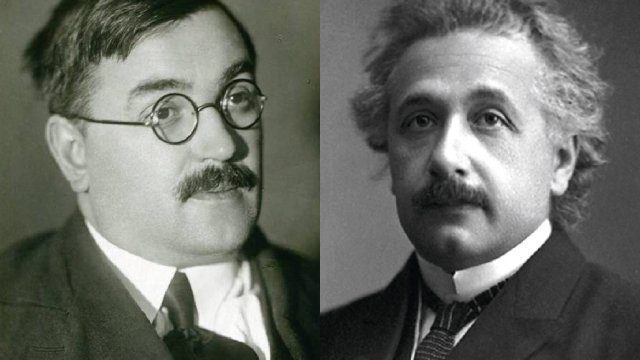Official:
Leonardo Pisano. Circa 1170 – circa 1250. First major mathematician of medieval Europe. Best known under the nickname Fibonacci.
Life and Work:
1. Each wife of Fibonacci,
Eating nothing that wasn’t starchy
Weighed as much as the two before her.
His fifth was some signora!
English poet and puzzle enthusiast J.A. Lindon played with numbers here. As it is commonly known, in the Fibonacci sequence, every subsequent number is the addition of the last two numbers.
2. Soviet poets caught up. During perestroika, the Pioner magazine published a poem reflecting on the story of Carl, Clara and their mutual thefts (reference to the tongue twister “Clara has stolen corals from Carl, and Carl has stolen a clarinet from Clara”). They made up and started to exchange gifts:
Once Clara gave him a soapbox;
After a thought, Carl sent her an empty candy box.
Then kind Clara sent him two air balloons,
And Carl sent her three cards of clubs.
Thankful Clara responded with five unpaired mittens;
Then Carl sent her eight different sandals.
Thirteen samovar pipes were a sign of Clara's friendship,
To which tearful Carl responded with
Twenty-one crankshafts.
Math teachers turned this poem into a math problem and offer it at different competitions. Because these gifts, when put in a row, make a sequence named Fibonacci: one, one, two, three, five, eight, thirteen, that is, every consequent number is a sum of two previous numbers.
3. Many know that Fibonacci discovered these numbers while breeding rabbits. This is how he put the problem: how many pairs of rabbits will be born in a year from one pair, if the rabbits give birth starting from the second month, and each pair gives birth to another pair?
4. That is basically all that the general public knows about Fibonacci. Not everybody even knows that Leonardo Pisano and Fibonacci are the same person, who lived way before Leonardo da Vinci – at the cusp of the 12th and 13th centuries.
5. Today, Fibonacci is called the first mathematician of medieval Europe, and his work Liter Abaci, written in 1202, is considered to be one of the most prominent books in mathematics, which was about three centuries ahead of its time. Europeans used this book to study mathematics almost till the end of the 17th century.
6. It is in Liter Abaci where Leonardo explained the Method of Indians, that is, counting with the help of figures. Among other counting methods that he knew, Leonardo Pisano mentioned counting with the help of abacus and fingers.
7. In the foreword to Liter Abaci, Leonardo Pisano wrote his short biography and described the sources of his interest in mathematics: “My father, who was from Pisa, worked as a syndic at the customs in Bougie in Africa, where he took me to study the art of counting. I liked the art of counting with the help of only nine Indian figures so much, that I decided to learn what is known about this art in Egypt, Syria, Sicily and Provence. Having traveled around these countries, I realized that the Indian counting system is the most evolved... Having studied this system and everything related to it profoundly and added my own research and what I have learnt from Euclid's Elements, I decided to write this composition.”
8. Yes, it is all true: Fibonacci was born in the Italian city of Pisa, supposedly in the 1170s. His father Guillermo was appointed a representative of Pisan trade in a colony in North Africa in 1192. Guillermo wanted Leonardo to become a good merchant and insisted on him studying mathematics in Algeria with Arab teachers.
9. Emperor Friedrich II (not the one who was called the Great and was friends with Voltaire, but his namesake Holy Roman Emperor) took interest in Liter Abaci. Leonardo Pisano was introduced at court.
10. It was there at enlightened emperor's court that Leonardo Pisano, who preferred exquisite mathematical battles to rough knight tournaments, wrote his Book of Squares about how to solve undetermined quadratic equations.
11. In 1240, Fibonacci was honored in his homeland: the Pisan Republic allocated him an allowance to mark his merits – consultations in accounting.
12. They say that Leonardo Pisano never called himself Fibonacci. This nickname is deciphered as Bonacci's son. They also try to translate Bonacci as “benevolent" or “lucky.” The mathematician himself also used the name Leonardo Bigollo, which in the Tuscan dialect meant “wanderer” or “idler.”
13. Before Fibonacci, educated Europe used inconvenient Roman figures. He was the one to inform all interested parties – merchants, accountants and money changers – about the achievements of Indian and Arab mathematicians.
14. Leonardo Pisano has other mathematical merits: he introduced the notions of plus and minus; however, he used them to mark calculation errors: when the result was more or less than the correct one. He also introduced the notion of fraction to describe the results of division, described the way of reduction to a common denominator and proved a number of theorems.
15. If two neighboring Fibonacci numbers are divided by each other, it is the golden ratio – the golden mean that gave birth to works of art.
16. In the 19th century, a monument to the scholar was erected in Pisa. Now it can be found in the Campo Santo cemetery in Piazza dei Miracoli, which means the Square of Miracles, next to the Leaning Tower of Pisa.
17. Asteroid #6765 was named after Leonardo Pisano. This number is the 20th member of the Fibonacci row. They could have also named Asteroids #2584 and 4181 (the 18th and 19th members, accordingly) after him, but those already had other names.
18. Since Fibonacci discovered his sequence, natural phenomena have been discovered, where this sequence plays an important role. Among them phyllotaxis – a rule, according to which leaves on a stem and seeds in a sunflower head are arranged. Let us explain it better using the example of leaves: as the stem grows, leaves grow on it in a certain order, which allows for the optimum access to light. Leaves appear on the stem in the form of a spiral, both clockwise and counterclockwise, at a definite angle of divergence. The angle of divergence demonstrates the exact Fibonacci sequence.






















